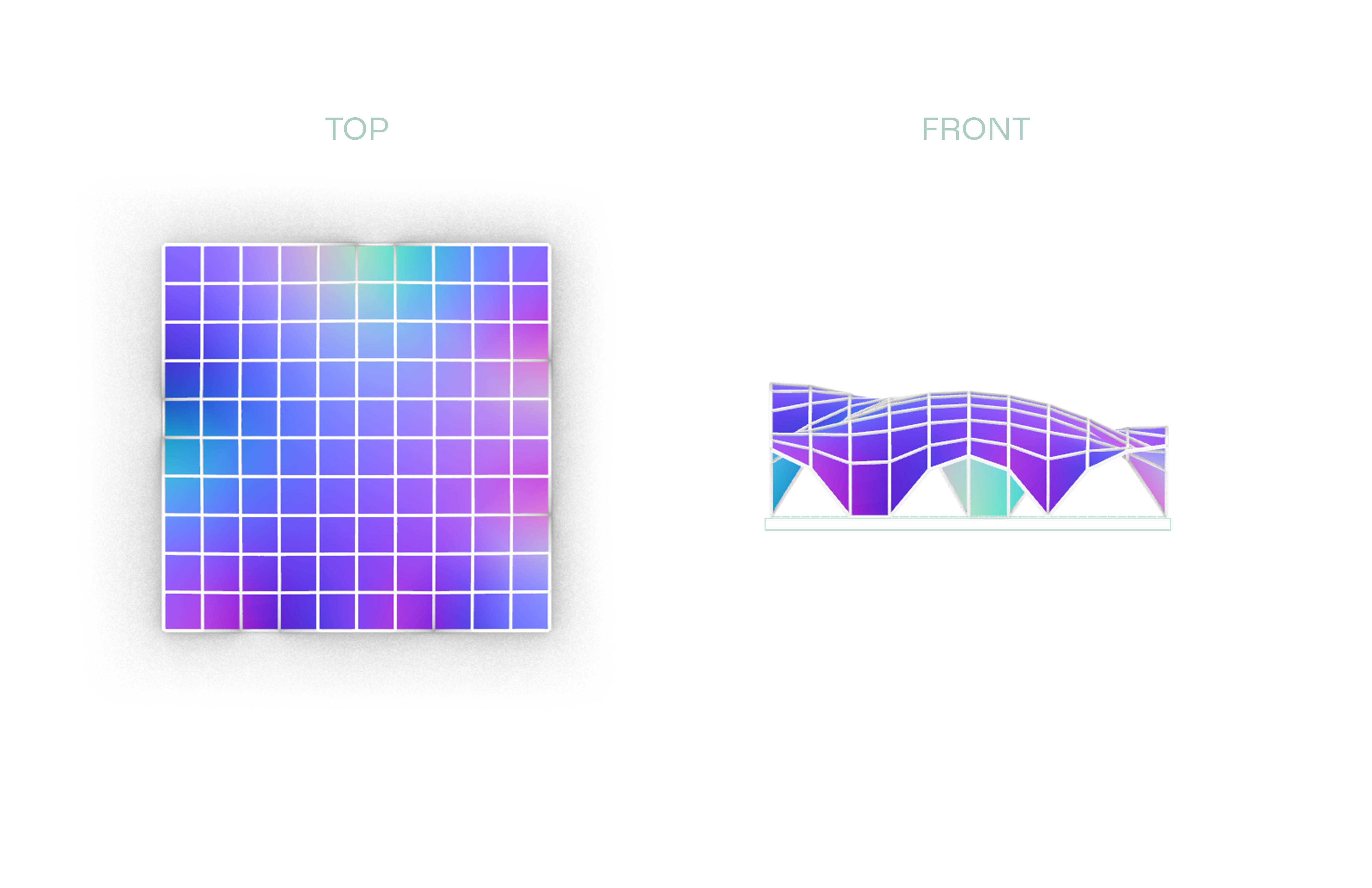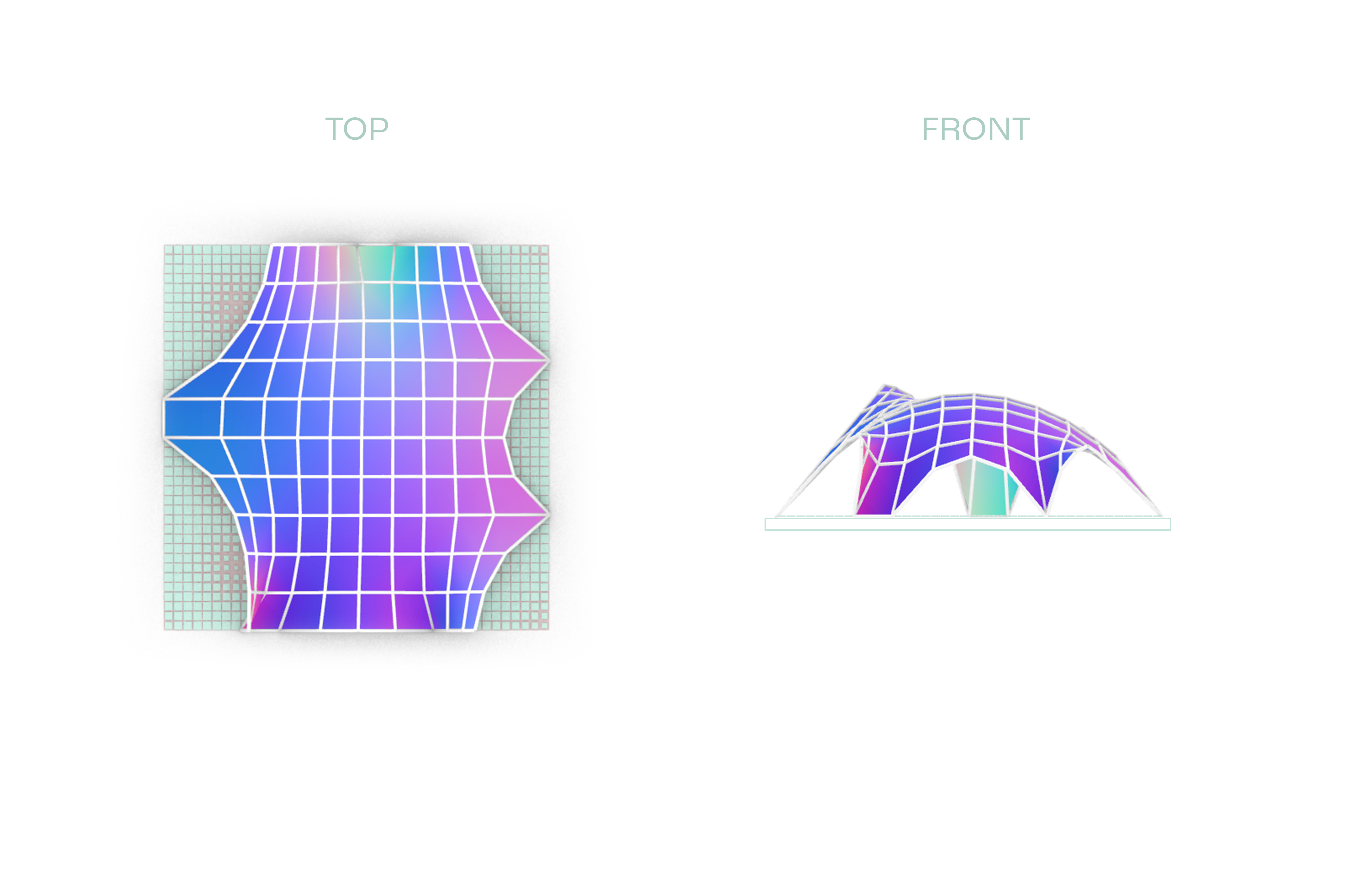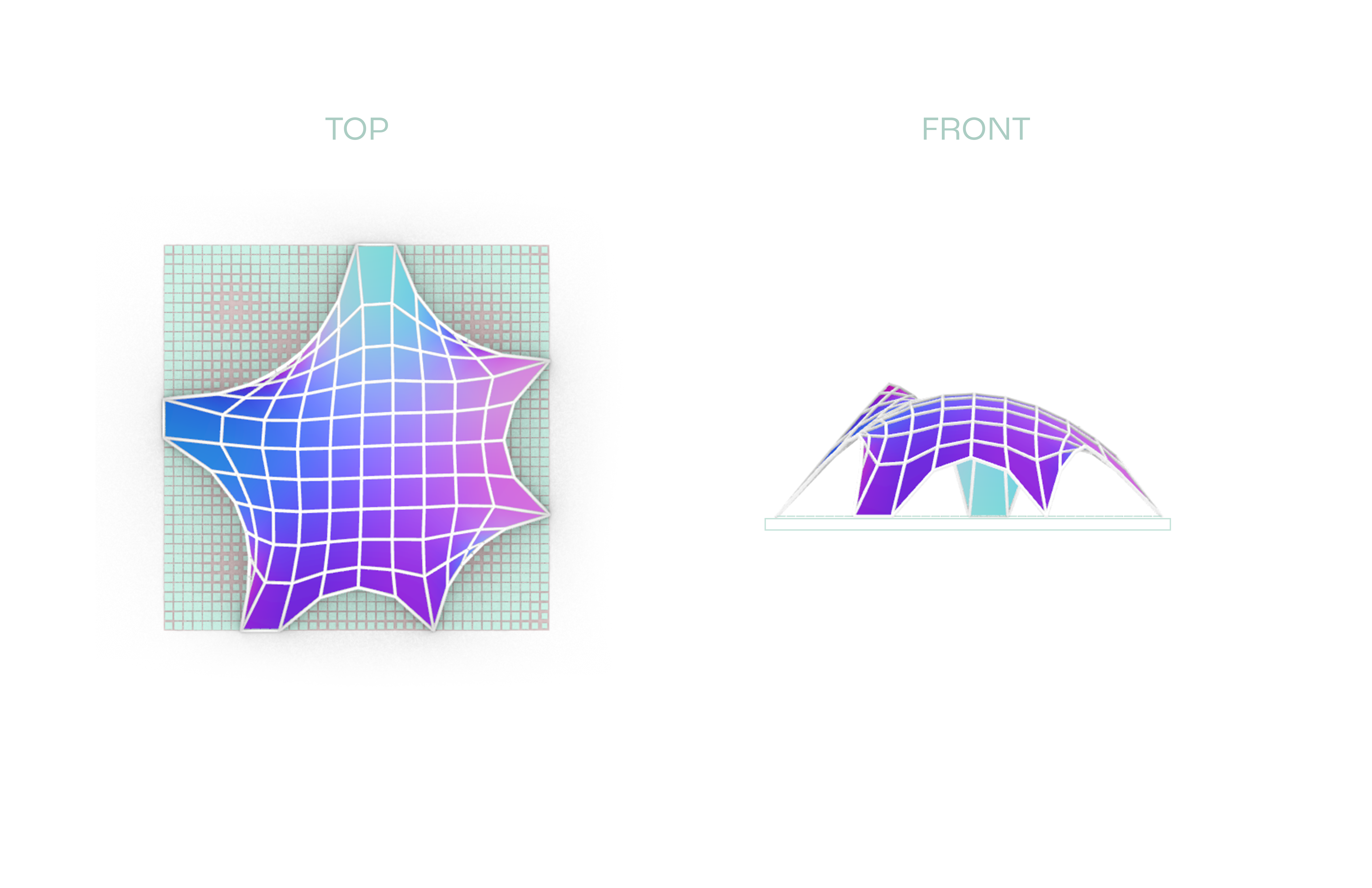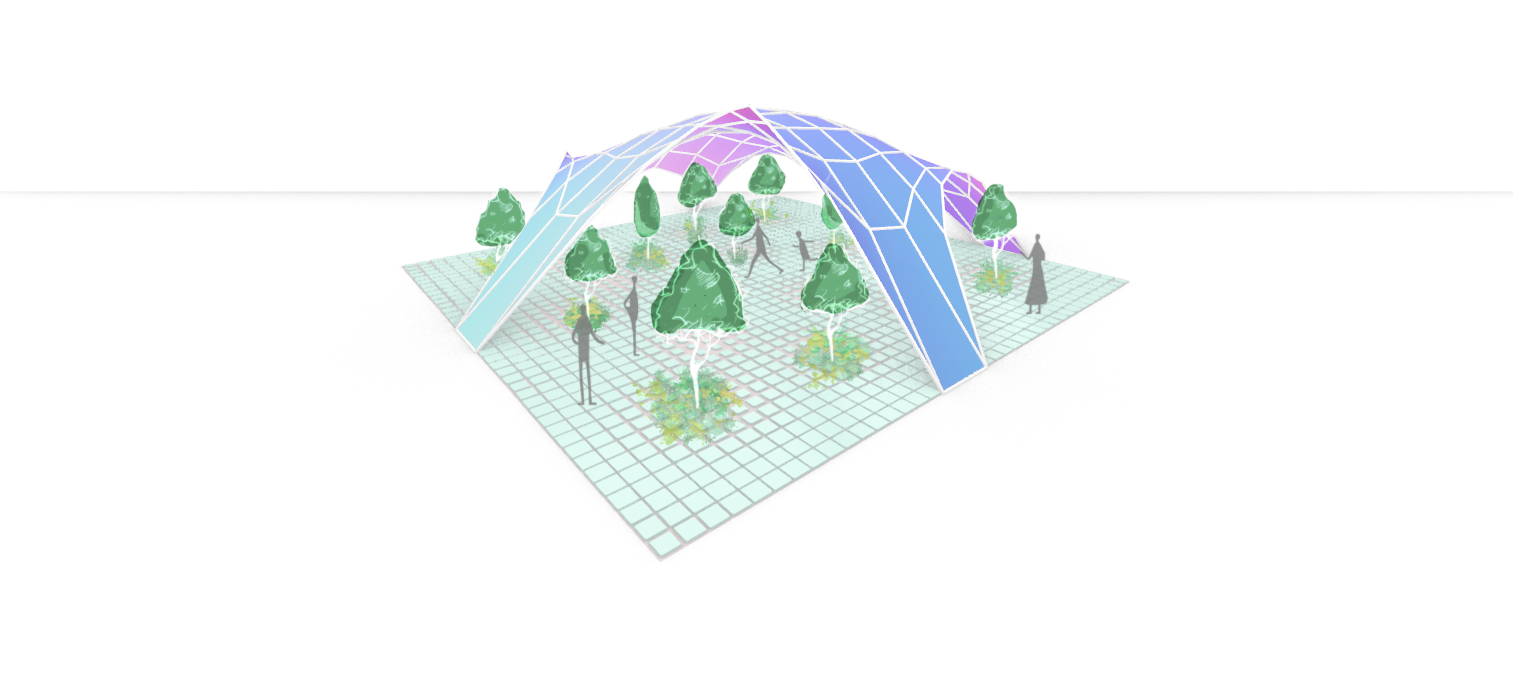The research project imagined a tile of a underused urban plaza as a square-based petri dish to test the movement of points within the tiled surface.
By defining a number of points within the geometry of the area, the density of tiles would decrease, relative to the closest point. The membrane between the ground plane and the tiling would simulate permeability to soil. In a landscape design, the methodology could be applied with sedum to grow between hardscape and centroids of points to be allocated shrub or tree planting.
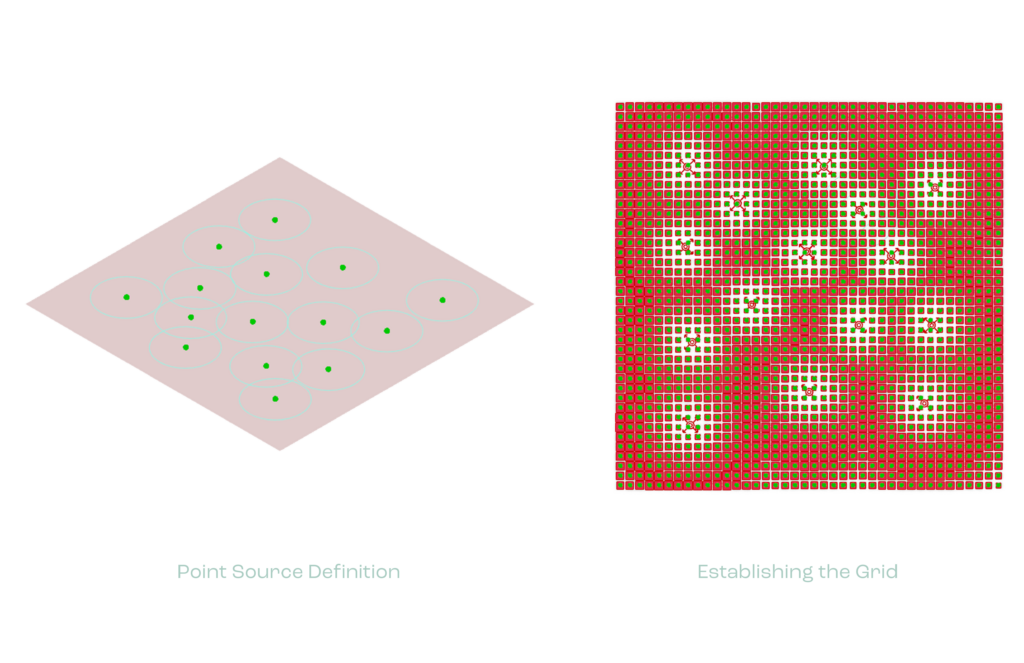
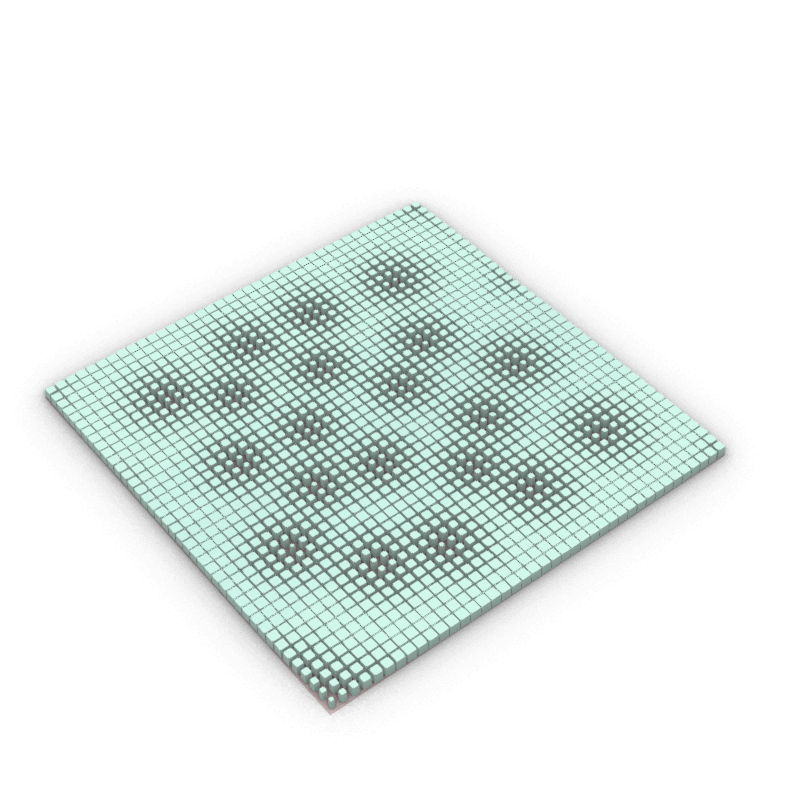
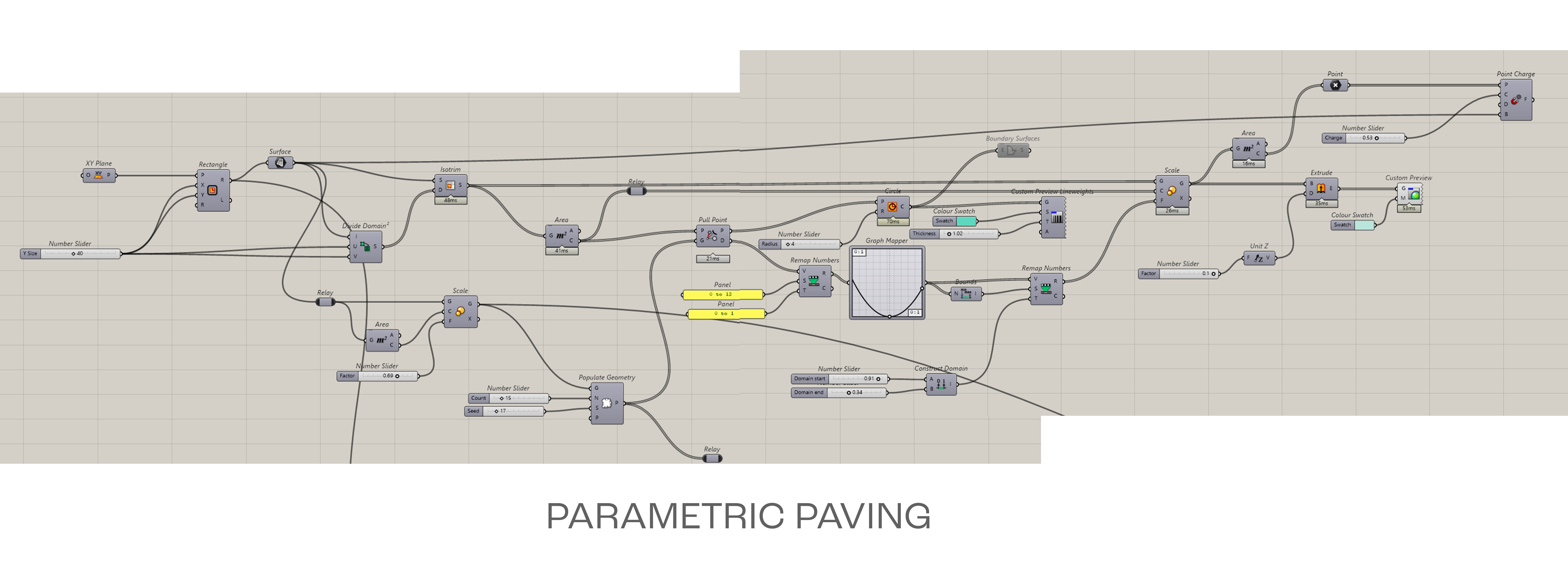
The square with 15 points of interest (tree nodes):

To create a sense of belonging is the start of engaging citizen participation in public spaces. Comfort is key to belonging, meaning the space would need to weave a web of desired interaction between actors in an open space. What could an enclosure provide an urban dweller? Shelter.
By conducting an operation to enclose the space with a noise isolating barrier and shelter, the dome-like gateway worked with catenary forces to form a shell that could let light into the space but prevent sonic pollution from entering the resting point. Geometries were drawn from the scientific studies of acoustic metamaterial informed the form finding process of the project.

Different vibration mode shapes of the spiderweb-inspired acoustic metamaterial. Credit: M. Miniaci et al.
Using Kangaroo to weave a catenary mesh:
